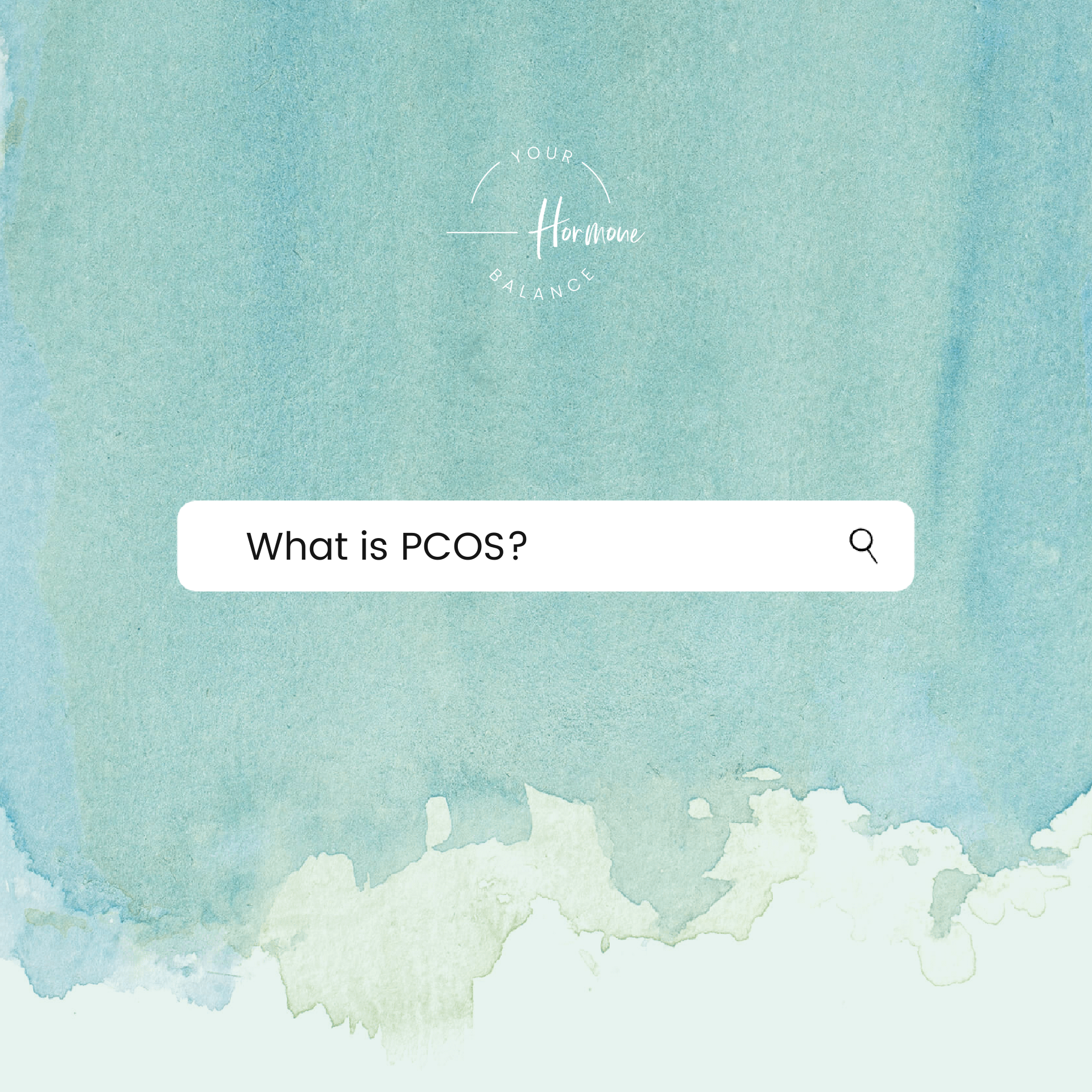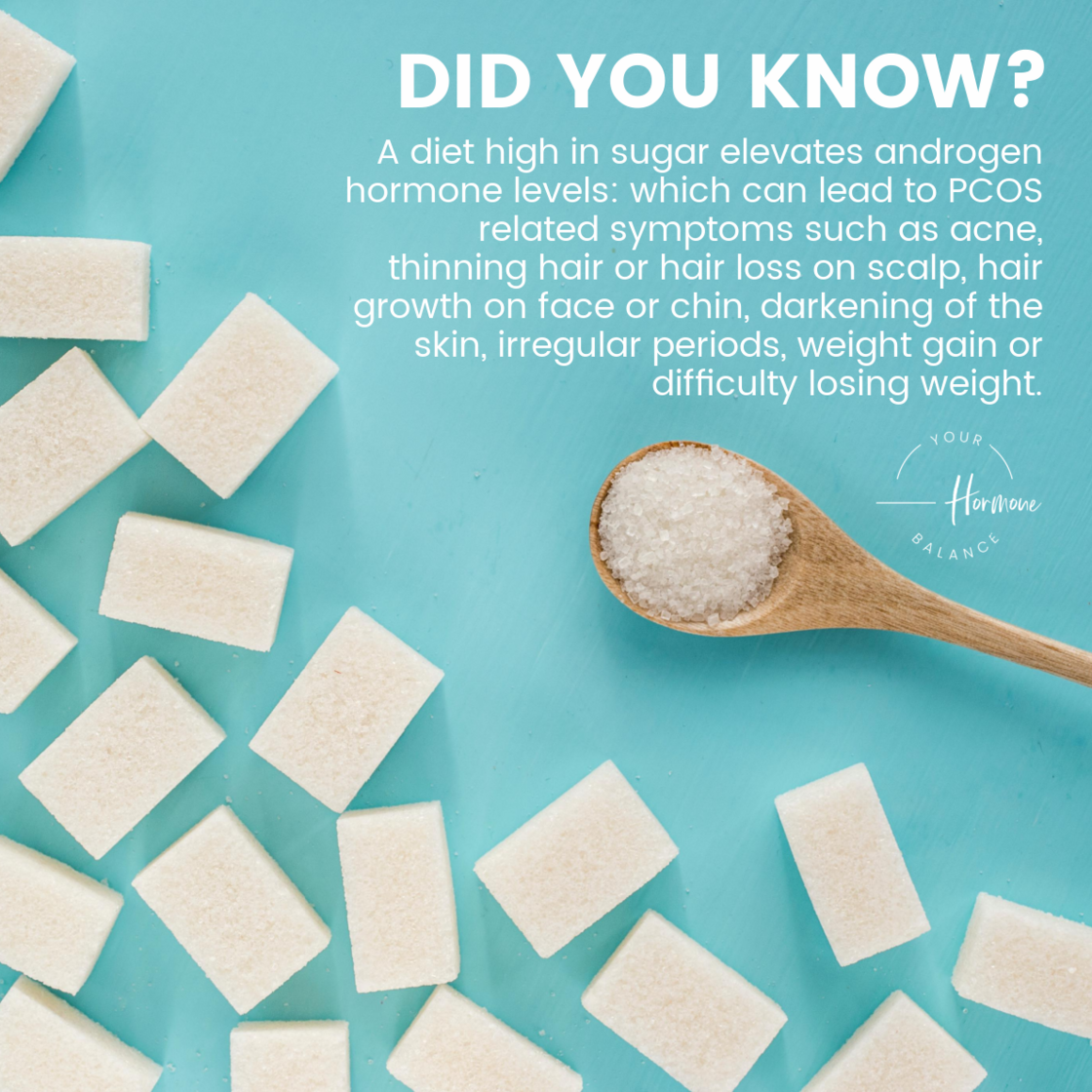
Polycystic ovarian syndrome (PCOS) is a common condition that affects approximately 5 million women in the US alone, and is a leading cause of infertility. Most women who suffer from PCOS have an underlying imbalance of reproductive hormones that triggers the growth of cysts on the ovaries and seriously disrupts the normal development and release of an egg (ovulation) during the menstrual cycle. Among the most frequent and frustrating symptoms women with PCOS experience are: irregular/heavy periods, cystic acne, weight gain, excessive hair growth on the face and body, and feeling more irritable or angry.
THE HORMONE / PCOS CONNECTION:
Women with PCOS produce higher levels of the androgen hormones typically associated with the physical strength, stamina and endurance of the male species, , testosterone & DHEA. Of course, both sexes require adequate, but differing, amounts of these key bone and muscle building hormones that also drive libido, confidence and cognition. Men’s bodies require significantly more androgen hormone than women while an excess of androgens in the female body can have a noticeable, even masculinizing effect. Women with higher levels of Testosterone and or DHEA may start to notice more and darker hair on our face and body, muscles that tend to get thicker rather than lean with exercise, moods that are more edgy than even, and periods that are, well, all over the place. This imbalance interferes with regular menstrual cycles which is why women with PCOS deal with missing or irregular periods.

Researchers have found a strong link between high androgens and chronically high levels of insulin (the hormone that regulates blood sugar), aka “insulin resistance.” The trouble with too much insulin (a result of junk/processed foods, sugars, simple carbs) is that it actually stimulates the ovaries to churn out androgens in amounts far greater than the estrogen and progesterone necessary to grow a viable egg at ovulation. If this imbalance is left undetected and unaddressed, irregular periods, cycles without ovulation (anovulation) and long-term infertility are the likely outcomes.
THERE ARE 3 MAIN TYPES OF PCOS:
1. Insulin-resistant PCOS – Covers the majority of PCOS cases (approx 70%). High insulin levels can interfere with ovulation, the cause for irregular and/or missing cycles and symptoms like weight gain, acne & mood swings. Women with this kind of PCOS usually have blood sugar and insulin levels that suggest Type 2 diabetes or prediabetes.
Note: It is common that women with PCOS have high levels of insulin along with insulin resistance, however it’s not true in all women. The “fat storage” hormone, insulin allows our cells to absorb glucose, which is used for energy but if you become insulin resistant, this means the cells aren’t able to absorb glucose for energy, leading your cells to be “starved” even after eating. This is why a large number of women with PCOS struggle losing weight no matter how many diets or strict exercise regimes they follow BUT just because someone is insulin resistant doesn't mean that they are overweight.
2. Inflammation-based PCOS – Driven by chronic inflammation which can be caused by a variety of factors such as food intolerances, repeated exposure environmental toxins, chronic viruses & a dependency on foods high in sugar & refined, simple carbs. Symptoms can include: fatigue, IBS/SIBO/bowel problems, headaches, joint pain and skin disturbances.
3. Post Synthetic Birth Control PCOS – Common in women who have been on the hormonal birth control pill or other synthetic forms (i.e. implant, shot, ring) for a prolonged period of time. When transitioning off the pill, they will find that their periods do not return because the synthetic hormones shut down communication between the brain and ovaries in order to prevent a pregnancy! It requires intentional work (and replenishing depleted micronutrients) to open back up the lines of communication!
HOW IS PCOS DIAGNOSED?
1. Labs showing HIGH Androgens (DHEA and/or Testosterone)** AND/OR symptoms that indicate higher than normal androgen levels (i.e. acne along the jawline, chest, and back; unwanted hair growth on the chin and/or chest, loss of hair on the head)
2. Irregular cycles: longer than 35+ days OR less than 9 menstrual cycles per year
3. Transvaginal ultrasound showing polycystic ovaries with 12+ ovarian follicles.
Note: PCOS cannot be definitively diagnosed by ultrasound (as some doctors perform) because it is normal for ovaries to have cysts which can result in an inaccurate diagnosis. This is why 2 of the 3 above conditions should be considered.
The good news about PCOS is that it is preventable and treatable through simple, impactful interventions, with dietary changes being essential to reversing its progression. Of course it is also crucial to test hormones upfront so you can see exactly where your levels lie and ensure you are following a plan tailored to your needs. (Check out our at-home testing + rebalancing packages HERE).
Keep reading for 8 preventative steps one can take to help keep androgen, cortisol and insulin levels from reaching unhealthy levels.
REDUCING HIGH ANDROGENS TO RELIEVE SYMPTOMS OF PCOS
Here are some of the top ways to reduce high androgen levels that can contribute to PCOS symptoms:
- Reduce sugar: Too much sugar (or foods that turn into sugar in the body like refined white flour breads and pasta) increases insulin which increases ovarian production of Testosterone and/or DHEA levels that cause irregular periods, erratic ovulation, cystic acne and skin breakouts.
- Eat low-glycemic foods: The low-gIycemic food plan has been shown to reduce androgens by up to 20 percent and lower inflammation. Try adding things like bell peppers dipped in hummus, mixed raw cashews & walnuts and almond butter with celery sticks or green apples into your snack rotation!
- Increase your fiber intake: Eating at least 25-35 grams of fiber-rich foods per day (think lentils, beans, berries, avocado, seeds etc.) is vital to stabilizing blood sugars! Fiber slows down the absorption of sugars from the GI tract into the bloodstream AND keeps you satisfied and full for much longer so it can actually promote weight loss (without restriction). Try steaming or lightly sautéing vegetables to retain more fiber which can also make them easier to digest. You can also add a psyllium husk fiber beverage into your routine like Bellway which comes in flavors like raspberry lemon & mixed berry and provides 5 grams of soluble fiber which will help keep up those healthy BM’s. They also have single packets so they’re easy to pack with you when traveling!
- Sprinkle on the cinnamon: Helps to moderate insulin levels, curb cravings and even increases lean body mass! Sprinkle some on your next morning latte, breakfast oats or yogurt bowl!
- Eat foods that contain zinc (oysters, scallops, mushrooms, spinach, asparagus, real dark chocolate, pumpkin seeds, beets, etc.). If you have acne, it's best to get zinc from food sources as supplementation can lead to excess and zinc toxicity. We love throwing some hemp seeds into a smoothie or making an easy black bean soup to increase zinc intake as well! Satisfy your chocolate cravings by trying our favorite, Beauty Bar Chocolate which is 83% raw cacao & sugar-free, sweetened with 0 glycemic, monk fruit. Use our code YOURHORMONEBALANCE for 20% off.

- Eat high quality protein: Eating plenty of plant-based proteins, organic chicken and turkey, low-mercury fish and grass-fed beef goes a long way towards lowering high androgen levels. Try prepping your proteins at the beginning of the week so that you can easily throw them on a salad or with a side of those fiber rich veggies for dinner! Have a hectic schedule? Choose proteins that are already pre-cooked but be sure to read labels for organic/grass-fed etc!
- Omega 3 fish oils DAILY: High quality fish oil has magic inflammation lessening properties, which helps improve insulin sensitivity (and reduce insulin resistance!) to protect us from obesity, Type 2 diabetes and heart disease. We love Nordic Naturals 'Omega Women Evening' and Udo's Vegan "Omega 3-6-9 Blend. Some of the best food-based sources of omega 3’s include wild-caught salmon, extra virgin olive oil, walnuts (and walnut oil), flax & chia seeds. Here’s an example of a delicious omega 3 rich lunch: A wild-caught salmon salad filled with veggies and topped with extra virgin olive oil with lemon, salt, pepper and a sprinkle of flax seeds!
- Probiotics DAILY: To restore friendly bacteria in the gut, increase digestive absorption of nutrients and reduce inflammation. You can also incorporate more probiotic rich foods into your diet like kefir, sauerkraut, and miso! Not sure how to incorporate these probiotic rich foods? Check out these fab tips for adding them into your routine! In supplement form, we love Seed's prebiotic and probiotic formula.
- Dial Back on High Intensity Training (HIIT): Too much HIIT training for women with high androgens (and women in general), can increase cortisol stress hormone levels which can be like a whiplash to your adrenals, driving up inflammation & potentially leading to insulin resistance (common in women with PCOS). Depending on the female, 2-3 days per week (no more than 20-30 mins per session) of HIIT can be beneficial for fat burning without negatively impacting hormone levels, but more than that can be perceived as a stressor to the body, further intensifying hormone imbalances. Additionally, for women of reproductive age, we suggest scheduling HIIT + heavier weight training during the follicular and ovulatory phases (when energy levels are higher & metabolism is slightly slower) + more restorative exercise (walks, stretching, yoga, etc) in the luteal and menstrual phase (when energy levels are lower & metabolism is slightly faster). Additionally, strength training or weight lifting focused on endurance (i.e. lighter weights + more reps w/ rest between sets) can be ideal for maintaining healthy androgen levels (approx. 2-3 days per week) and building lean muscle. Over-exercising in general contributes to increased cortisol production and hormonal imbalances so it's really about learning what works best for your body, taking rest days & making time for movement that brings you joy and leaves you feeling recharged vs. depleted!
Finally, we highly suggest ordering the following cookbook, which offers auto-immune recipes that incorporate all of the nutrition based tips above: The AutoImmune Paleo Cookbook by Mickey Trescott
